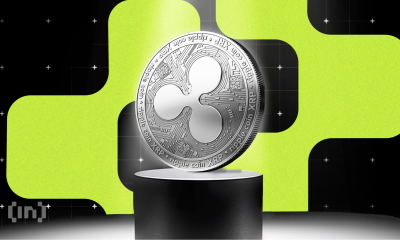Market
X (Twitter) Banned in Brazil and More
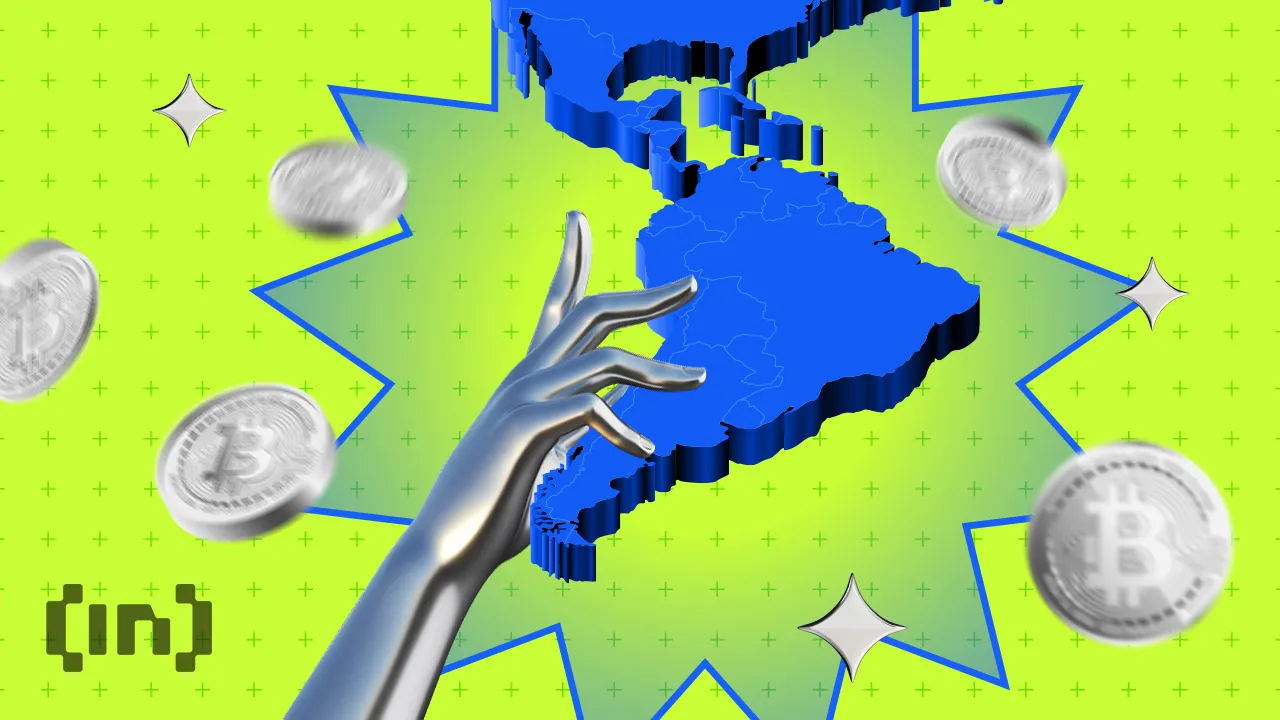
BeInCrypto comprehensive Latam Crypto Roundup brings Latin America’s most important news and trends. With reporters in Brazil, Mexico, Argentina, and more, we cover the latest updates and insights from the region’s crypto scene.
This week’s roundup notes that Brazil’s government has banned X (formerly Twitter) due to its non-compliance with local regulations. Meanwhile, Chile has initiated a legal battle against Worldcoin due to concerns over biometric data, among other updates.
Bitcoin Adoption in El Salvador: Progress or Setback?
El Salvador’s President Nayib Bukele has acknowledged that Bitcoin adoption in his country has not advanced as quickly as expected. This comment is particularly interesting, given that the country declared BTC as legal tender in 2021.
In an interview with TIME Magazine, Bukele described the results as “positive,” although he admitted that the anticipated benefits were not achieved. Although large businesses in El Salvador, such as supermarkets and restaurant chains, accept Bitcoin as a means of payment, mass adoption has not materialized.
Read more: Who Owns the Most Bitcoin in 2024?
To date, Bukele’s government has promoted the use of cryptocurrency in daily transactions and also put forward ambitious proposals such as the creation of Bitcoin City. This initiative intends to build a city powered by geothermal energy from volcanoes that would serve as a global hub for cryptocurrencies. In addition, the president has launched a citizenship program for people who invest at least $1 million in Bitcoin or Tether, with the aim of attracting international investors.
However, despite these efforts, Bukele’s administration remains strongly supportive of Bitcoin. Since the president implemented the Dollar Cost Averaging (DCA) strategy to buy one Bitcoin daily, the country has consistently purchased BTC regardless of market conditions.
At the time of writing, El Salvador’s mempool shows that the government holds 5,859 BTC. With the current market price of Bitcoin, this amount is equivalent to approximately $346.35 million.
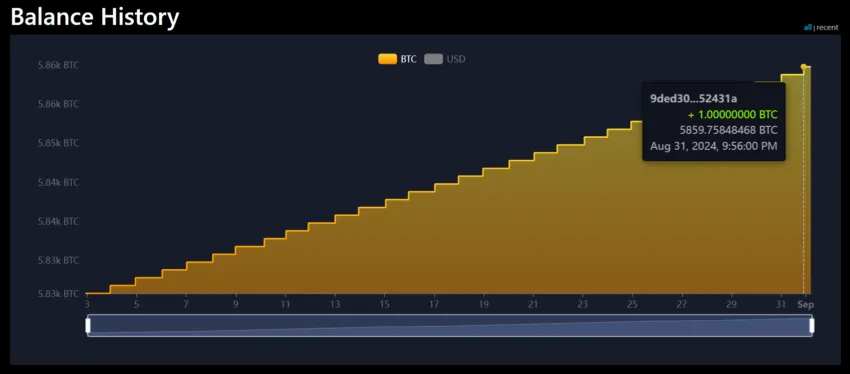
Brazil has suspended the social media platform X following its failure to comply with local regulations. Minister Alexandre de Moraes ordered the ban after Elon Musk’s company neglected to appoint a legal representative in the country. The platform is expected to become inaccessible within 24 hours.
In addition to the ban, Brazil has imposed a fine of R$50,000 (approximately $10,000 USD) per day on individuals or companies using VPNs to access the app. Apple and Google have also been given a five-day deadline to remove the app from their stores.
This situation arose after X removed its legal representatives from Brazil in response to what Musk described as “untenable demands” from the Brazilian court, including censorship and privacy concerns.
Considering Brazil’s sixth-place global ranking for the number of X users, a ban could have significant consequences. Furthermore, this decision could impact the country’s crypto community.
X is a crucial platform for real-time market updates and crypto discussions. A potential ban would significantly challenge investors who rely on the platform for information and market insights.
According to a recent survey by CoinGecko, 34.4% of crypto traders and investors rely on X for their information needs. Specifically, 66.7% of the 1,065 survey participants identified X as their primary source of crypto information.
Worldcoin Sued in Chile Over Biometric Data Concerns
Chile’s National Consumer Service (SERNAC) has filed a lawsuit against the Optimistic SpA Group, the company that operates Worldcoin in the country. The lawsuit, submitted to the 2nd Local Police Court of Las Condes, cited irregularities in collecting biometric data from Chilean citizens.
SERNAC’s investigation uncovered multiple violations of the Consumer Law, particularly concerning the lack of transparency and inadequate protection of personal data.
The Chilean agency seeks to impose substantial fines, potentially reaching $20 million, on Worldcoin for its alleged misconduct. Additionally, it demands the immediate halt of Worldcoin’s operations in the country until the legal issues are resolved.
US Bill Reaffirms Sanctions on Venezuela, Targeting Cryptocurrencies
Amid ongoing political tensions, US Congress members are preparing to introduce a bill that will reinforce sanctions against Venezuela, with a specific focus on cryptocurrencies. The proposed “Law for the Promotion of Freedoms, Opportunities and Rights in Venezuela” (VALOR) seeks to maintain pressure on the Venezuelan government by blocking the assets of key financial institutions, including the Central Bank of Venezuela and the state-owned cryptocurrency, Petro.
This legislation, spearheaded by Congresswoman María Elvira Salazar, aims to tighten existing measures and expand the reach of US sanctions to ensure Venezuela remains under international scrutiny.
“The VALOR Act will do just that by seeking international cooperation for a peaceful transition to democracy in Venezuela and maintaining sanctions until there is substantial and measurable progress,” Salazar said.
In 2018, the Trump administration also implemented measures against Petro, a cryptocurrency the Maduro government launched to sidestep US sanctions. Trump labeled Petro as a corruption tool and a desperate bid to sustain the government.
Stellar Invests in Colombia’s Puntored to Boost Cross-Border Payments
The Stellar Development Foundation (SDF) announced investing $2 million in the Colombian FinTech company Puntored. They facilitated this investment through the Stellar Enterprise Fund as part of an effort to use blockchain technology to enhance remittance services and financial inclusion in Latin America.
Colombia has seen a significant increase in remittance inflow. The country’s Ministry of Finance reported a 17.3% rise between January and July 2024 compared to the previous year.
Read more: How To Accept Crypto Payments: A Brief Guide
Stellar’s collaboration with Puntored currently serves over 18 million users across Colombia, Mexico, and Puerto Rico. Therefore, this partnership is expected to transform the digital payments sector in the region.
Disclaimer
All the information contained on our website is published in good faith and for general information purposes only. Any action the reader takes upon the information found on our website is strictly at their own risk.
Market
Binance Faces Community Backlash and Boycott Calls


Controversies surrounding token listings, the depegging of the FDUSD stablecoin, and allegations of unethical behavior have raised a crucial question: Is Binance losing its credibility?
These issues threaten to erode trust and challenge Binance’s standing in the crypto industry.
Binance Struggles to Meet the Standard
One of Binance‘s most pressing issues is the poor performance of the tokens listed on the exchange. As BeInCrypto reported earlier, 89% of the tokens listed on the platform in 2025 recorded negative returns.
Even more concerning, another report reveals that most of the tokens listed in 2024 also experienced negative performance.
Listing on Binance was once considered a “launchpad” for new projects. However, it no longer guarantees success.
A prime example is the ACT token, a meme coin listed on the exchange that quickly plummeted. Earlier this week, Wintermute—a major market maker—dumped a large amount of ACT, exerting strong downward pressure on its price and raising concerns about the transparency of Binance’s listing process.
Such criticism has led the community to believe Binance prioritizes listing fees over users’ interests.
Connection to FDUSD
The FDUSD stablecoin has also become a focal point of controversy, with Binance at its center. FDUSD lost its peg, dropping to $0.89 after reports surfaced that its issuing company had gone bankrupt.
Wintermute, one of the largest FDUSD holders outside of Binance, withdrew 31.36 million FDUSD from the exchange at 11:15 AM UTC. This move is believed to have exacerbated the depegging situation, sparking panic in the market.
More concerning, a community member claimed that some Binance employees leaked internal information about the FDUSD incident so they could select whale chat groups.
If true, this would severely damage Binance’s reputation and raise major questions about the platform’s transparency and ethics.
Overall, the community’s dissatisfaction is growing, with many users calling for a boycott of the exchange. Such negative reactions are shaking user confidence in the platform, which was once considered a symbol of credibility in the crypto space.
“Binance today caused massive liquidations on alts listed on their exchange. I warned you all yesterday about their very dirty tactics, specifically GUN. I refuse to use Binance #BoycottBinance,” wrote popular crypto YouTuber Jesus Martinez.
These accusations stem from a central issue that Binance prioritizes profits over user interests. Over the past few months, the community has constantly criticized its listing strategy, arguing that the exchange focuses on “shitcoins” to collect high listing fees without considering project quality.
Although the exchange recently introduced a community voting mechanism to decide on listings, this might not be enough to silence the criticism.
As a Tier-1 exchange, the company is evaluated based on trading volume, security, regulatory compliance, and community trust. However, recent events suggest that the exchange is struggling to maintain these standards.
Disclaimer
In adherence to the Trust Project guidelines, BeInCrypto is committed to unbiased, transparent reporting. This news article aims to provide accurate, timely information. However, readers are advised to verify facts independently and consult with a professional before making any decisions based on this content. Please note that our Terms and Conditions, Privacy Policy, and Disclaimers have been updated.
Market
Stellar (XLM) Falls 5% as Bearish Signals Strengthen
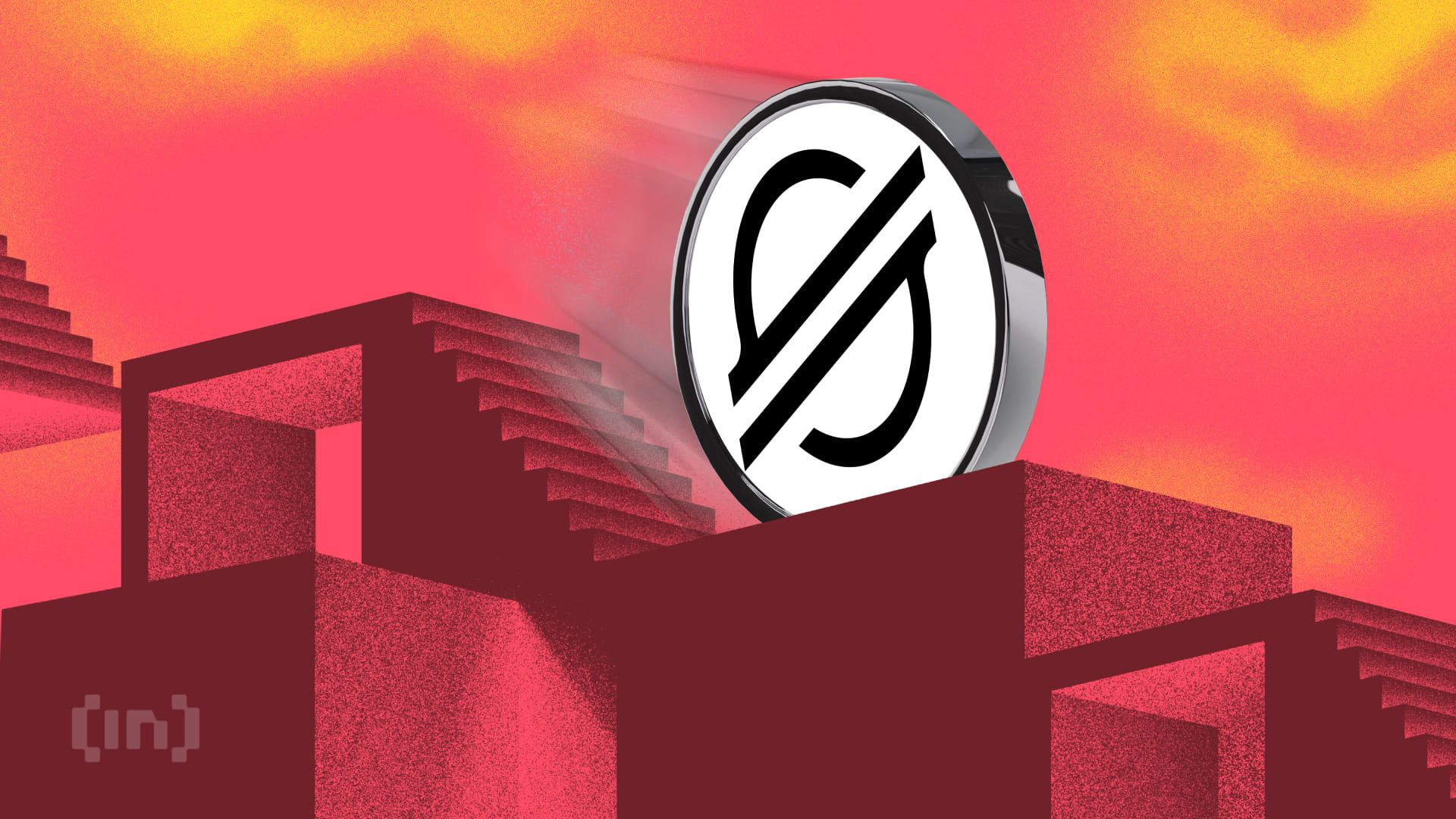
Stellar (XLM) is down more than 5% on Thursday, with its market capitalization dropping to $8 billion. XLM technical indicators are flashing strong bearish signals, suggesting continued downward momentum that could test critical support levels around $0.22.
While a reversal scenario remains possible with resistance targets at $0.27, $0.29, and $0.30, such an upside move would require a substantial shift in market sentiment.
XLM RSI Shows Sellers Are In Control
Stellar’s Relative Strength Index (RSI) has dropped sharply to 38.99, down from 59.54 just two days ago—signaling a notable shift in momentum.
The RSI is a widely used momentum oscillator that measures the speed and magnitude of recent price changes, typically ranging between 0 and 100.
Readings above 70 suggest overbought conditions, while levels below 30 indicate oversold territory. A reading between 30 and 50 often reflects bearish momentum but is not yet extreme enough to trigger an immediate reversal.

With Stellar’s RSI now below the key midpoint of 50 and approaching the oversold threshold, the current reading of 38.99 suggests that sellers are gaining control.
While it’s not yet in oversold territory, it does signal weakening buying pressure and increasing downside risk.
If the RSI continues to fall, XLM could face further price declines unless buyers step in soon to stabilize the trend and prevent a slide into more deeply oversold levels.
Stellar CMF Heavily Dropped Since April 1
Stellar’s Chaikin Money Flow (CMF) has plunged to -10, a sharp decline from 0.19 just two days ago, signaling a significant shift in capital flow dynamics.
The CMF is an indicator that measures the volume-weighted average of accumulation and distribution over a set period—essentially tracking whether money is flowing into or out of an asset.
Positive values suggest buying pressure and accumulation, while negative values point to selling pressure and capital outflow.

With XLM’s CMF now deep in negative territory at -10, it indicates that sellers are firmly in control and substantial capital is leaving the asset.
This level of negative flow can put downward pressure on price, especially if it aligns with other bearish technical signals. Unless buying volume returns to offset this outflow, XLM could continue to weaken in the near term.
Will Stellar Fall To Five-Month Lows?
Stellar price action presents concerning signals as EMA indicators point to a strong bearish trend with significant downside potential.
Technical analysis suggests this downward momentum could push XLM to test critical support around $0.22. It could breach this level and fall below the psychologically important $0.20 threshold—a price not seen since November 2024.
This technical deterioration warrants caution from traders and investors as selling pressure appears to be intensifying.
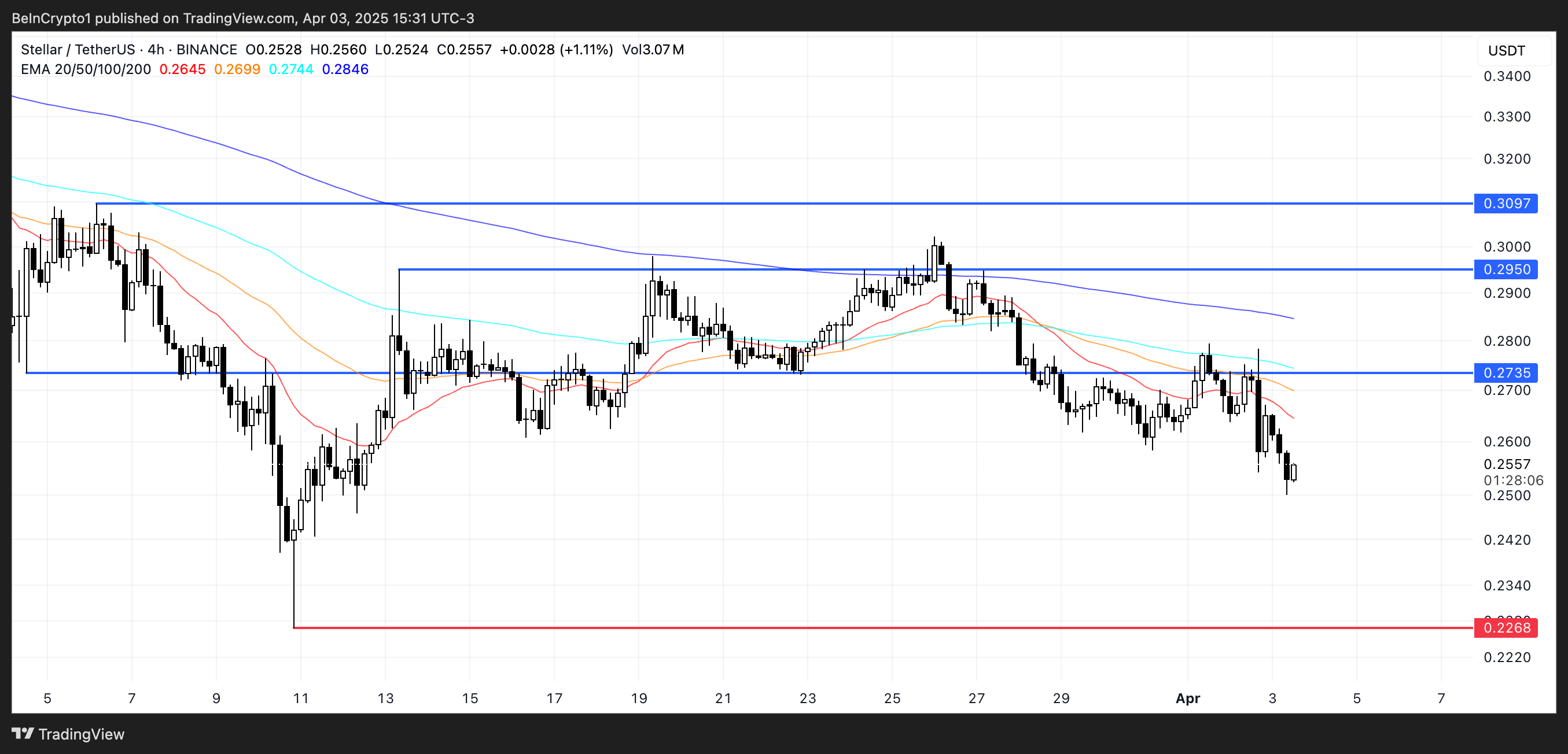
Conversely, a trend reversal scenario would require a substantial shift in market sentiment. Should bulls regain control, XLM could challenge the immediate resistance at $0.27, with further upside targets at $0.29 and the key $0.30 level.
However, this optimistic outlook faces considerable obstacles, as only a dramatic sentiment shift coupled with the emergence of a powerful uptrend would enable such a recovery.
Until clearer bullish signals manifest, the prevailing technical structure continues to favor the bearish case.
Disclaimer
In line with the Trust Project guidelines, this price analysis article is for informational purposes only and should not be considered financial or investment advice. BeInCrypto is committed to accurate, unbiased reporting, but market conditions are subject to change without notice. Always conduct your own research and consult with a professional before making any financial decisions. Please note that our Terms and Conditions, Privacy Policy, and Disclaimers have been updated.
Market
Solana (SOL) Crashes 11%—Is More Pain Ahead?

Solana (SOL) is under heavy pressure, with its price down more than 10% in the last 24 hours as bearish momentum intensifies across key indicators. The Ichimoku Cloud, BBTrend, and price structure all point to continued downside risk, with SOL now hovering dangerously close to critical support levels.
Technical signals show sellers firmly in control, while the widening gap from resistance zones makes a near-term recovery increasingly difficult.
Solana’s Ichimoku Cloud chart is currently flashing strong bearish signals. The price has sharply broken below both the Tenkan-sen (blue line) and Kijun-sen (red line), confirming a clear rejection of short-term support levels.
Both of these lines are now angled downward, reinforcing the view that bearish momentum is gaining strength.
The sharp distance between the latest candles and the cloud further suggests that any recovery would face significant resistance ahead.
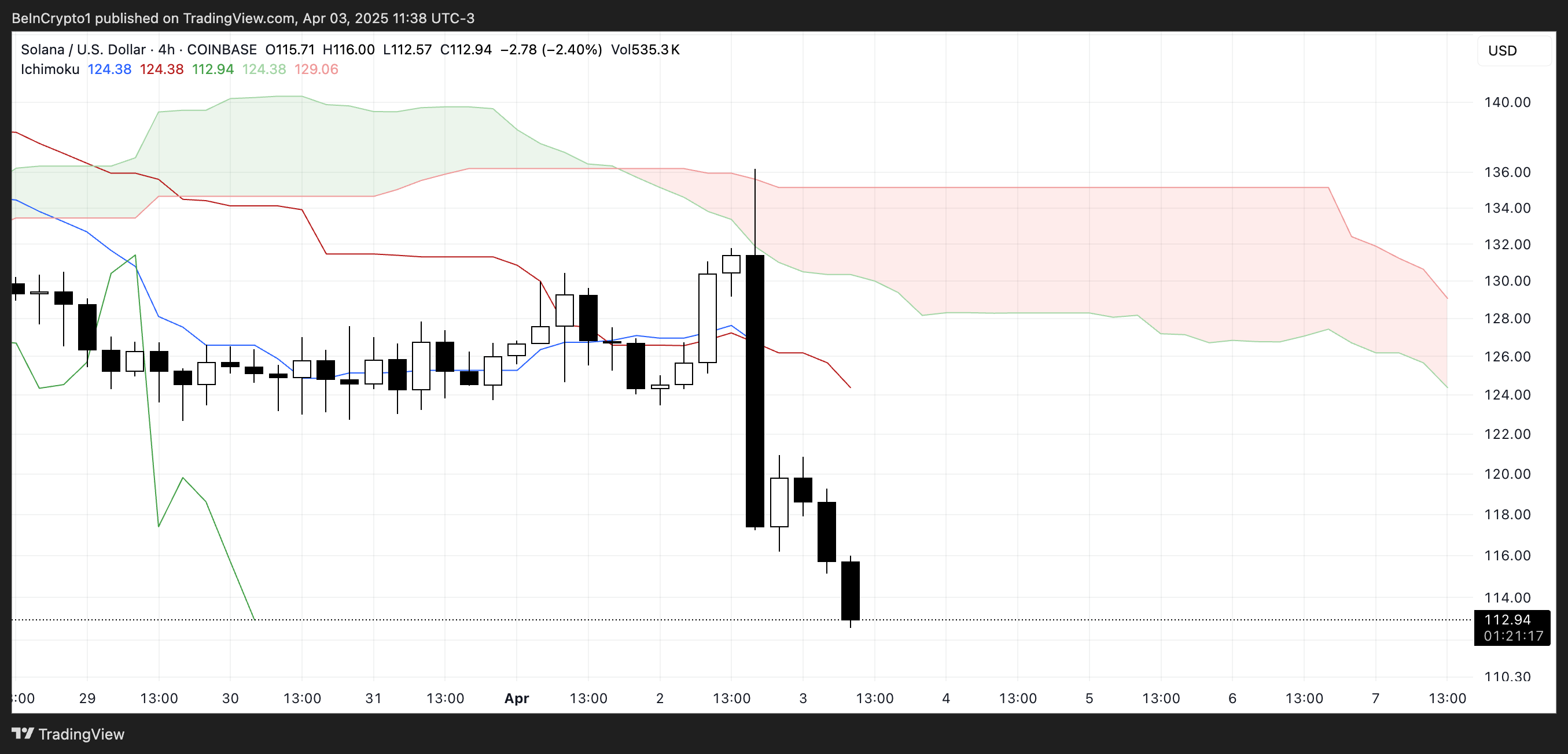
Looking at the Kumo (cloud) itself, the red cloud projected forward is thick and sloping downward, indicating that bearish pressure is expected to persist in the coming sessions.
The price is well below the cloud, which typically means the asset is in a strong downtrend.
For Solana to reverse this trend, it would need to reclaim the Tenkan-sen and Kijun-sen and push decisively through the entire cloud structure—an outcome that looks unlikely in the short term, given the current momentum and cloud formation.
Solana’s BBTrend Signals Prolonged Bearish Momentum
Solana’s BBTrend indicator currently sits at -6, having remained in negative territory for over five consecutive days. Just two days ago, it hit a bearish peak of -12.72, showing the strength of the recent downtrend.
Although it has slightly recovered from that low, the sustained negative reading signals that selling pressure remains firmly in control and that the bearish momentum hasn’t yet been reversed.
The BBTrend (Bollinger Band Trend) measures the strength and direction of a trend using Bollinger Bands. Positive values suggest bullish conditions and upward momentum, while negative values indicate bearish trends.

Generally, values beyond 5 are considered strong trend signals. With Solana’s BBTrend still well below -5, it implies that downside risk remains elevated.
Unless a sharp shift in momentum occurs, this persistent bearish reading may continue to weigh on SOL’s price in the near term.
Solana Eyes $112 Support as Bears Test February Lows
Solana’s price has broken below the key $115 level, and the next major support lies around $112. A confirmed move below this threshold could trigger further downside. That could potentially push the price under $110 for the first time since February 2024.
The recent momentum and strong bearish indicators suggest sellers remain in control, increasing the likelihood of testing these lower support levels in the near term.
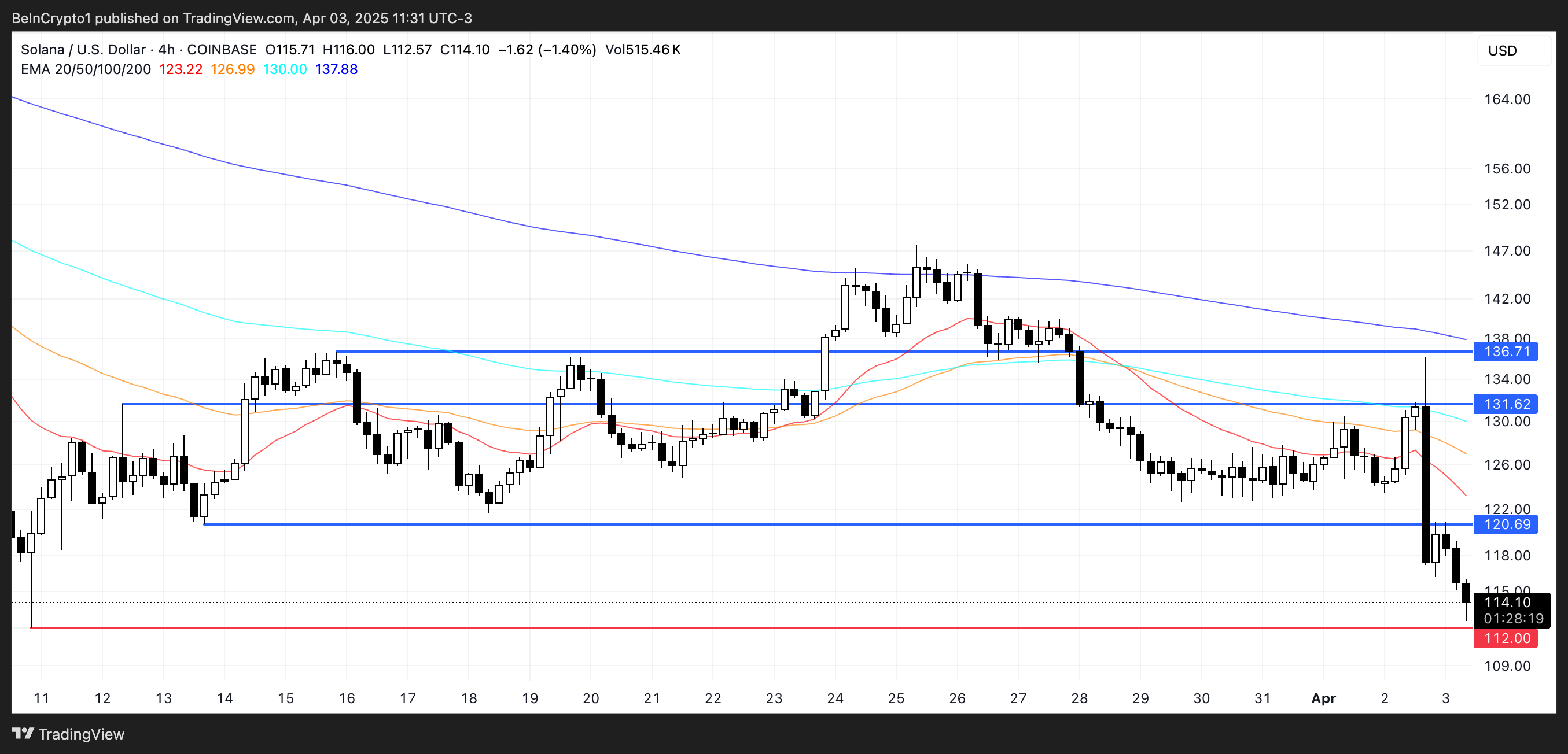
However, if Solana manages to stabilize and reverse its current trajectory, a rebound toward the $120 resistance level could follow.
Breaking above that would be the first sign of recovery, and if bullish momentum accelerates, SOL price could aim for higher targets at $131 and $136.
Disclaimer
In line with the Trust Project guidelines, this price analysis article is for informational purposes only and should not be considered financial or investment advice. BeInCrypto is committed to accurate, unbiased reporting, but market conditions are subject to change without notice. Always conduct your own research and consult with a professional before making any financial decisions. Please note that our Terms and Conditions, Privacy Policy, and Disclaimers have been updated.
-

 Market20 hours ago
Market20 hours agoCardano (ADA) Downtrend Deepens—Is a Rebound Possible?
-

 Altcoin21 hours ago
Altcoin21 hours agoAnalyst Forecasts 250% Dogecoin Price Rally If This Level Holds
-

 Market19 hours ago
Market19 hours agoEthereum Price Recovery Stalls—Bears Keep Price Below $2K
-

 Market21 hours ago
Market21 hours agoXRP Price Under Pressure—New Lows Signal More Trouble Ahead
-

 Market16 hours ago
Market16 hours agoIP Token Price Surges, but Weak Demand Hints at Reversal
-

 Ethereum15 hours ago
Ethereum15 hours agoEthereum Trading In ‘No Man’s Land’, Breakout A ‘Matter Of Time’?
-
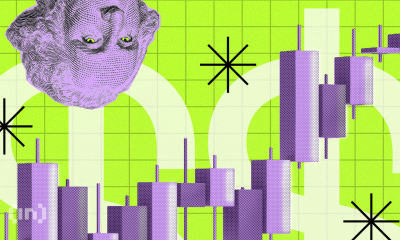
 Bitcoin18 hours ago
Bitcoin18 hours agoUS Dollar Index Drops – What Does It Mean for Bitcoin?
-

 Market15 hours ago
Market15 hours agoHBAR Foundation Eyes TikTok, Price Rally To $0.20 Possible





